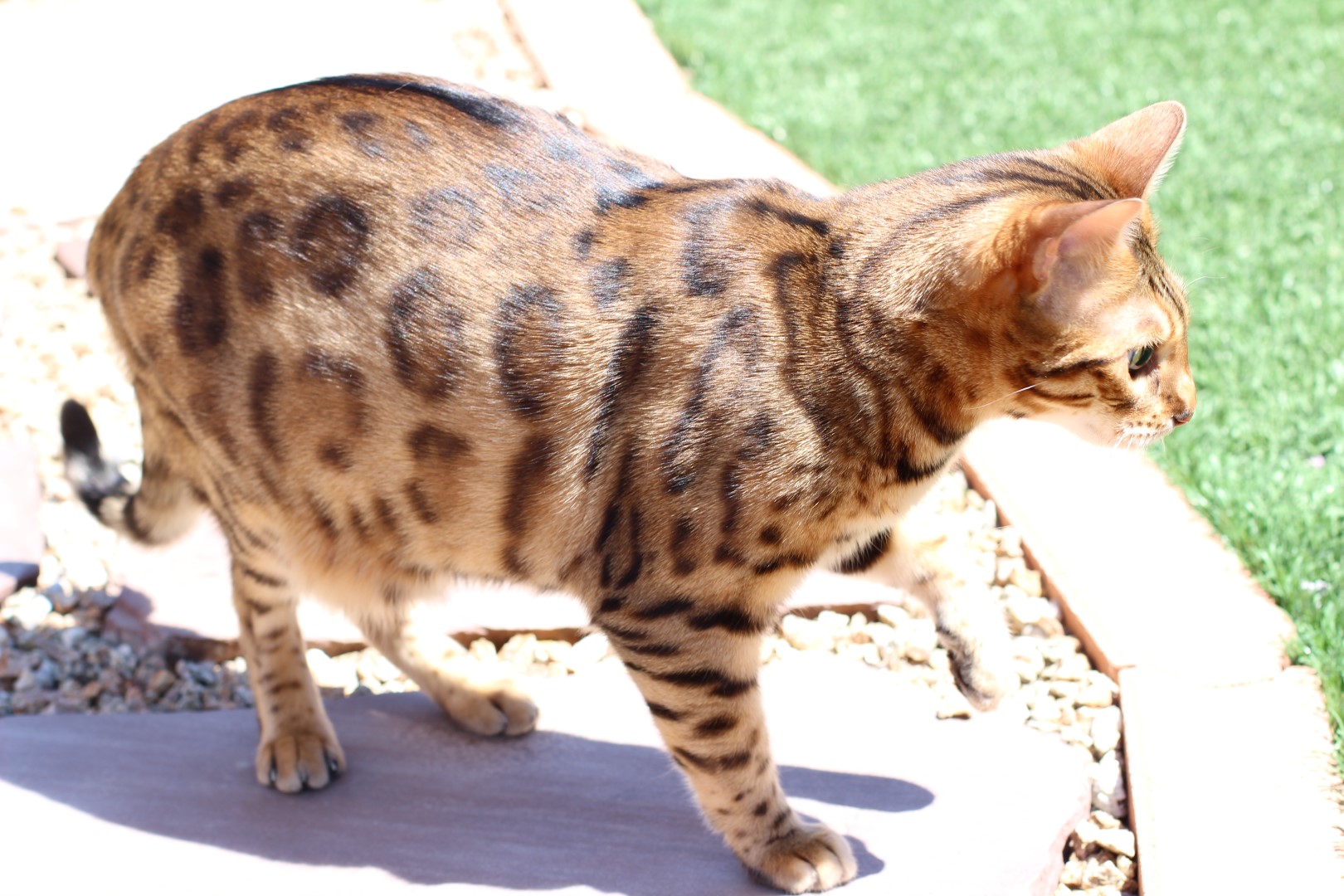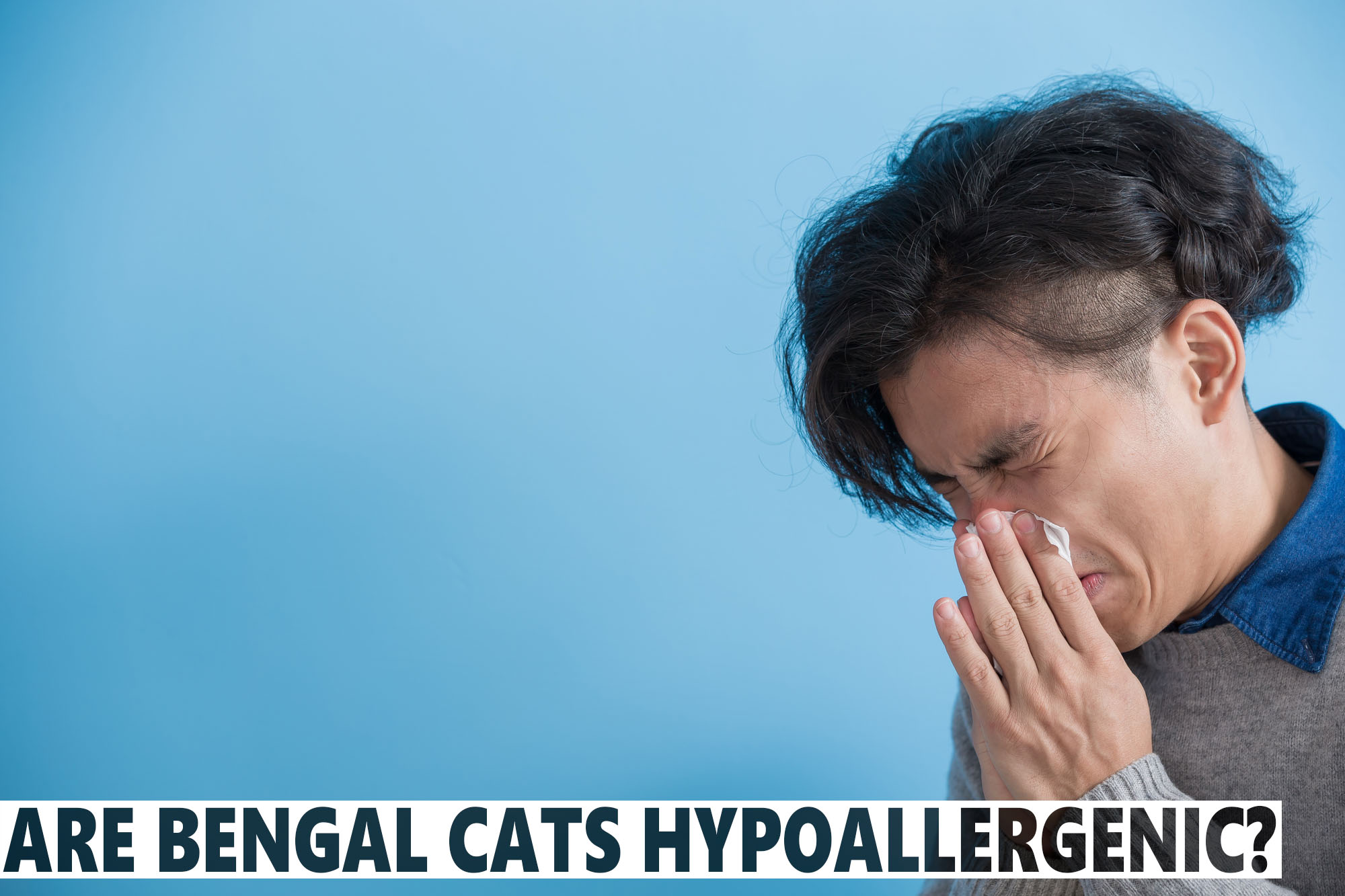There are many people who would love to have a mini-lap leopard or two in their homes but are somewhat allergic to cats.
This implies that before adopting that cute Bengal kitten, they would want to know if this particular breed is hypoallergenic enough to have within the confines of their home without risking any health complications.
So, the biggest question that rings on their mind is; are Bengals hypoallergenic?
Well, this is by no means a straightforward answer, and for that reason, it deserves a thoroughly in-depth analysis. Here we go.
1. Bengal Cats are not Hairless
Unlike the Sphynx, Siamese or Oriental Shorthair cats, Bengals are not entirely hairless. That means that they don't necessarily give off zero Fel D1 protein.
Just to make things clear, Fel D1 is the allergen that determines whether a cat is hypoallergenic or not. So what exactly makes these cats hypoallergenic compared to other breeds?
The answer lies in their coats.

For starters, Bengals have a very fine and unique pelt that needs very little if any constant maintenance.
As a result, Bengals don't have to self-groom as much (or for as long ) as other breeds of cats.
In other words, their fur/coats should contain comparatively less allergen-rich saliva than the regular cats'.
Secondly, Bengals naturally don't shed as much ( or as often) as other cats even though they are not hairless. Thus, any dander that may be trapped between their fur hairs won't get spread around as one would expect.
2. The Top Ten Most Hypoallergenic Cat List
Crosscheck any list of the most hypoallergenic breeds of cats, and you won't lack Bengals there. There are several reasons for this.
One is because people who are severely allergic to cats will tend to have mild or no reactions at all to Bengals especially in direct comparison to the bulk of the other breeds of cats. Bengals owe this desirable quality due to the following facts:
3. A Low Allergy Cat
Truth be told,
No domestic cat can be listed as being 100% hypoallergenic.
This is because the allergen Fel D1 ( that apparently causes allergic reactions to people who are termed to be cat sensitive ) is found in all cats' saliva.
It is a protein that equates to the digestive salivary enzyme in humans.
So, no matter which angle you wish to look at it, all cats will produce an amount of this dander.
On the flipside, though, Bengals are among those cats that produce a comparatively less amount of this allergy-causing protein.
Which, of course, explains why 90% of people who are allergic to cats seem to be able to keep a Bengal in their homes without suffering the typical symptoms that are associated with severe allergic reactions.
It is also one of the highly recommended breeds for cat-allergic people who really want to adopt a feline into their homes and don't mind the occasional minor symptoms that could be triggered by the presence of it.
If anything, most individuals considering adopting a Bengal might be pleased to realize that they can co-exist without little to no risk of allergy symptoms at all.


